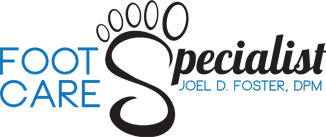Dr. Joel Foster's Treatment Options for Heel Spurs in Lee's Summit
A heel spur doesn’t go away on its own, but Dr. Joel Foster can diagnose spurs using various methods. He can perform a physical exam and order imaging tests, such as an X-ray, to confirm the diagnosis.
Treatment options for heel spurs depend on the severity of the condition and the individual's specific symptoms and needs. Dr. Joel Foster first thoroughly examines the area to rule out or address any underlying issues. Then, he will recommend different treatments that won’t remove the heel spur but may prevent it from worsening and provide helpful pain relief.
Conservative treatments for heel spurs may include:
- Rest and ice. One of the first steps in treating a heel spur is to rest the affected foot and apply ice to reduce inflammation and pain.
- Stretching exercises. Extra bony tissue usually develops because of stress, strain and tightness in the muscles and tendons of the foot, resulting in a bone spur. Proper stretching exercises can alleviate this restriction, which may in turn reduce pressure on the spur.
- Footwear. Wearing proper shoes can also also reduce pain. Look for shoes that support the foot and stabilize your feet.
- Custom orthotics. Wearing affordable custom orthotics inside your shoes provides additional support and stability for the foot to reduce pressure when walking or standing. Orthotics can also be used to improve many biomechanical flaws contributing to heel pain.
- Medications. Over-the-counter pain relievers, such as ibuprofen or acetaminophen, help ease inflammation and lessen pain.
- Accelerated soft tissue healing therapies. Many patients report decreased inflammation and pain with therapies such as laser therapy and regenerative injections. These methods are often used with other treatments to stimulate the body’s natural healing responses.
- Equinus brace
- EPAT
Surgery for Heel Spurs in Lee's Summit
If conservative treatments don’t provide heel spur symptom relief, surgery may be necessary in some cases to treat or even permanently remove a heel spur. Dr. Joel Foster will determine what type of surgery is right for your specific needs.


